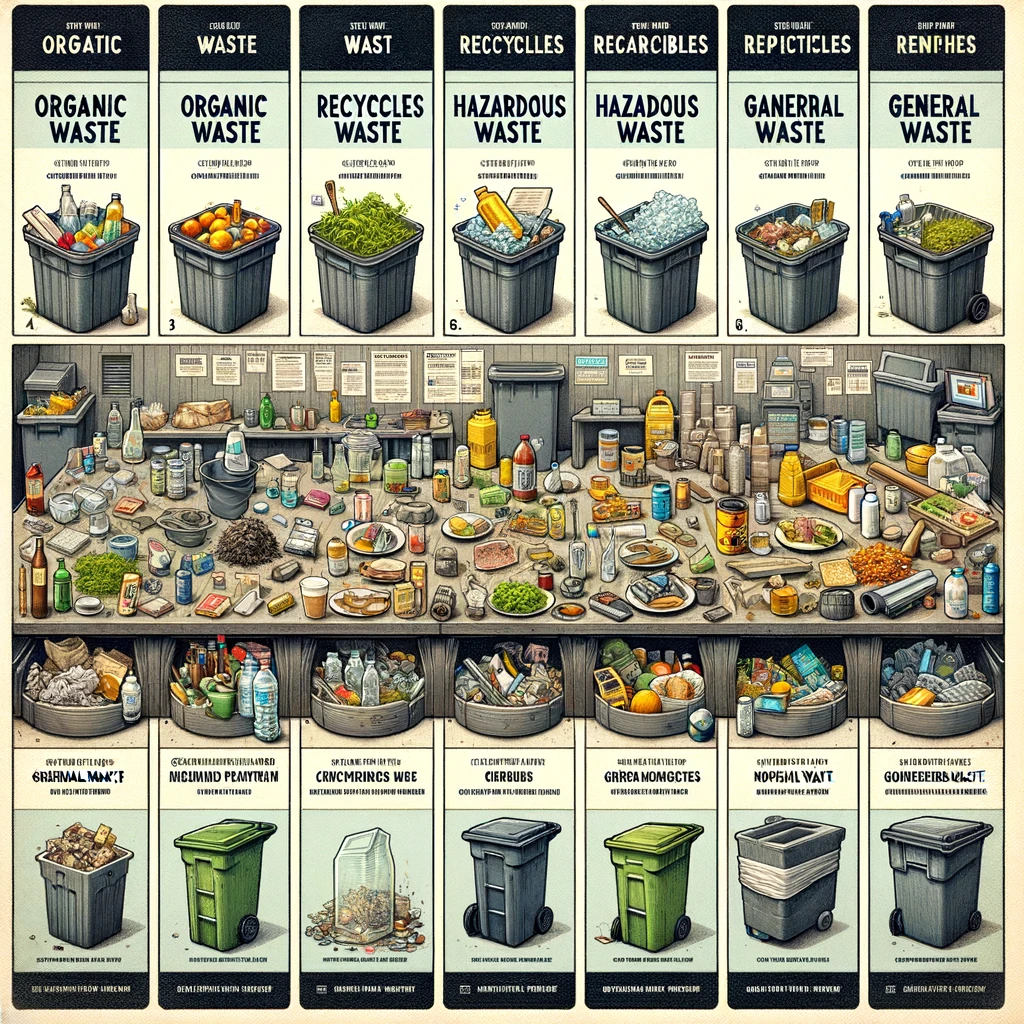Types of Refuse are discussed in this article because the efficient removal of refuse, especially human excreta, is an important factor in the maintenance of the health of the community.
Dry household refuse
It consists of ashes, dust, papers, broken crockery, etc., and organic matter in the form of potato peelings, trimmings from vegetables, grease, etc.
Refuse in towns
It is removed by the local sanitary authority: in some towns and even in parts of London it is collected only once a week. Care must be taken that animal matter and vegetable refuse is wrapped in paper and tightly packed in a dustbin. The bin should be made of rustless metal (galvanized iron) fitted with handles and have a cover with a closely-fitting rim. Organic refuse left in the vicinity of a house is liable to attract flies, rats, and mice, and so may indirectly cause disease.
Hospital refuse
It includes all the debris enumerated above, Hid in addition, soiled dressings, wool, tow, etc.
Dry material, the sweepings of wards, should be placed in a covered bin, and kept in the open air outside the ward. solid dressings should be placed in a covered enamel which should be kept in the sluice-room. The contents of both the above should be removed daily more fell hi if necessary and burned in a destructor. Waste food material should be emptied into covered which should be removed and cleaned daily. The contents are usually sold as food for pigs.
Interesting Facts I Bet You Never Knew About Types of Refuse
Ultimate disposal of house and trade refuse is by:
Disposal into the sea. Special barges convey the rubbish well out to ‘sea, discharging it at such a distance that it will not be washed back to the foreshore.
Dumping, unless under stringent conditions, is objectionable as dumps become breeding grounds for rats. They are liable to catch fire. In time they may become overgrown and forgotten, and houses built on this undesirable site.
Pulverization. The refuse is mixed and crushed, and the resulting mass dumped.
Incineration. The refuse is consumed in a furnace; this is by far the best method, although incinerators frequently give off offensive odours. Cinders and clinkers are extracted by screens, and used for road construction.
In waste management, refuse can be categorized into various types based on its source, composition, and how it can be treated or disposed of. Here’s a tabular representation of different types of refuse in waste management:

| Type of Refuse | Description | Common Sources | Disposal/Treatment Methods |
|---|---|---|---|
| Organic Waste | Biodegradable material like food waste, garden waste. | Homes, restaurants, gardens. | Composting, Anaerobic digestion. |
| Recyclable Material | Items that can be recycled such as paper, glass, plastics. | Homes, offices, schools. | Recycling centers. |
| Hazardous Waste | Dangerous or harmful materials like chemicals, batteries. | Industries, hospitals, labs. | Special handling and disposal. |
| Electronic Waste (E-Waste) | Discarded electronic devices and components. | Homes, offices, electronic stores. | Special recycling facilities. |
| Construction and Demolition Debris | Waste from construction or demolition activities. | Construction sites. | Recycling, landfills. |
| Inert Waste | Waste that does not undergo any significant physical, chemical or biological transformations. | Construction sites, mining. | Landfill. |
| Medical Waste | Waste generated by healthcare activities, including syringes, bandages. | Hospitals, clinics, labs. | Incineration, Autoclaving. |
| Textile Waste | Discarded clothing, fabrics, and other textiles. | Homes, textile industries. | Recycling, donation. |
| Green Waste | Waste composed of garden or park vegetation. | Gardens, parks. | Composting, Mulching. |
| Bulky Waste | Large items of waste material, like furniture, appliances. | Homes, businesses. | Special pickup, Recycling. |
This table provides an overview of the different types of refuse commonly managed in waste management systems, along with their sources and treatment or disposal methods.
Conclusion
Understanding the various types of refuse and their impacts is crucial in developing sustainable waste management strategies. By minimizing waste generation, implementing effective recycling programs, and promoting responsible disposal practices, we can collectively work towards a cleaner and healthier environment. Let us all strive to reduce our waste footprint and protect our planet for future generations.



